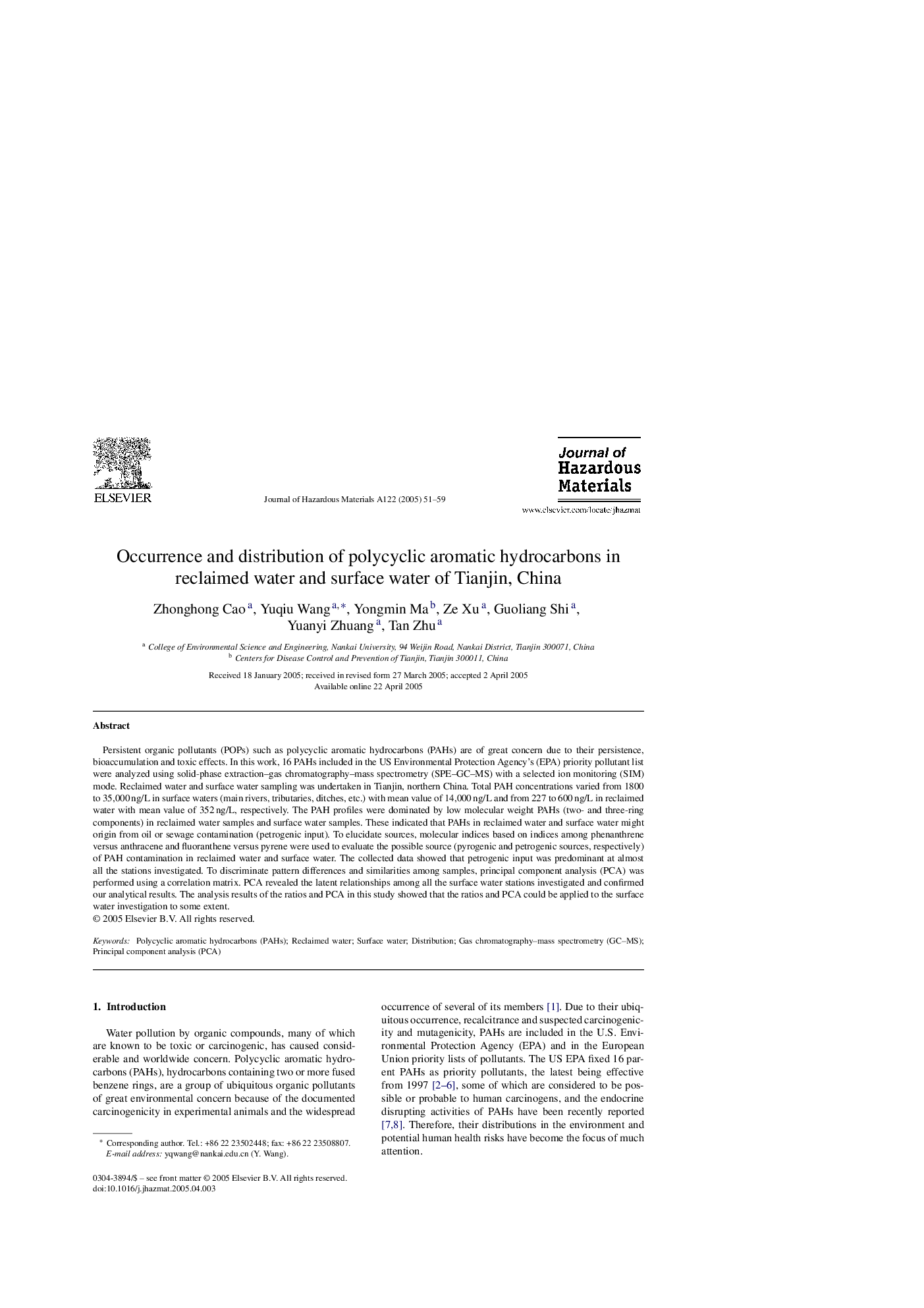| Article ID | Journal | Published Year | Pages | File Type |
|---|---|---|---|---|
| 9674236 | Journal of Hazardous Materials | 2005 | 9 Pages |
Abstract
Persistent organic pollutants (POPs) such as polycyclic aromatic hydrocarbons (PAHs) are of great concern due to their persistence, bioaccumulation and toxic effects. In this work, 16 PAHs included in the US Environmental Protection Agency's (EPA) priority pollutant list were analyzed using solid-phase extraction-gas chromatography-mass spectrometry (SPE-GC-MS) with a selected ion monitoring (SIM) mode. Reclaimed water and surface water sampling was undertaken in Tianjin, northern China. Total PAH concentrations varied from 1800 to 35,000Â ng/L in surface waters (main rivers, tributaries, ditches, etc.) with mean value of 14,000Â ng/L and from 227 to 600Â ng/L in reclaimed water with mean value of 352Â ng/L, respectively. The PAH profiles were dominated by low molecular weight PAHs (two- and three-ring components) in reclaimed water samples and surface water samples. These indicated that PAHs in reclaimed water and surface water might origin from oil or sewage contamination (petrogenic input). To elucidate sources, molecular indices based on indices among phenanthrene versus anthracene and fluoranthene versus pyrene were used to evaluate the possible source (pyrogenic and petrogenic sources, respectively) of PAH contamination in reclaimed water and surface water. The collected data showed that petrogenic input was predominant at almost all the stations investigated. To discriminate pattern differences and similarities among samples, principal component analysis (PCA) was performed using a correlation matrix. PCA revealed the latent relationships among all the surface water stations investigated and confirmed our analytical results. The analysis results of the ratios and PCA in this study showed that the ratios and PCA could be applied to the surface water investigation to some extent.
Keywords
Related Topics
Physical Sciences and Engineering
Chemical Engineering
Chemical Health and Safety
Authors
Zhonghong Cao, Yuqiu Wang, Yongmin Ma, Ze Xu, Guoliang Shi, Yuanyi Zhuang, Tan Zhu,
